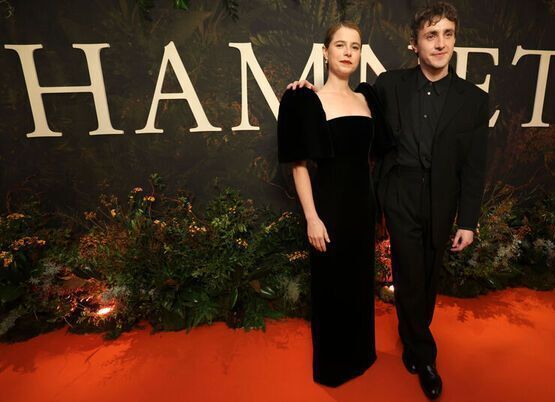Maura Mulligan (Mayo) Vera Wrenn (Limerick) and Sadie McHugh RIP (Sligo) at a New York feis in the late 1950s or early ‘60s.
By Maura Mulligan
It was a thrill to stand in the shade for a few minutes and have an in-person conversation with my neighbors Natalia and Camilla this morning. Since Covid started its prowl, I’ve communicated with relatives, friends, and neighbors primarily through text or video chat. Today, 8-year-old Camilla was excited to talk about a new addition to her fish tank. She wanted to show me a picture on her phone – then remembered social distancing.
This sidewalk chat reminded me how much in-person communication enriches our lives. It brought on memories of the lost - those who played a role in bringing us joy and fulfillment.
When I came to the U.S. in 1958, I became friends with Sadie McHugh from Sligo. We enjoyed the dances at City Center ballroom and met other young people from home dancing to Brendan Ward’s band playing waltzes, foxtrots and quicksteps. We céilí danced to Paddy Noonan’s piano accordion playing “The Siege of Ennis,” “Stack of Barley” and “Shoe the Donkey.”
Those were the days when girls took up one side of the dance floor and boys the other side. The boys would come sliding across from their side to ask for a dance. Neither Sadie nor I were ever wallflowers and we’d warn each other if we saw someone a bit tipsy making his way in either of our directions. “Watch out for this one, you might have to hold him up.”
We shared stories about the young men who invited us to dance and go on dates. We joined classes at the McNiff School of Irish Dance and competed at the local feiseanna along with our mutual friend, Vera Wrenn from Limerick. It was Vera who told me that Sadie died in May this year. I wish I could have been at her funeral to say goodbye – to whisper about the dancing we shared as new immigrants. Rest in peace old friend. I will remember you as a 20-something year old strawberry blond wearing a dancing costume.
The Irish psyche has a strong desire to “give a good send off” to people who were a part of our lives. Indeed it’s deep-rooted in our history, songs and stories:
“Whack fol the da, now, dance to your partner
Welt the floor your trotters shake
Wasn't it the truth I told you
Lots of fun at Finnegan's wake…”
The tradition of the wake has changed since Tim Finnegan’s time but still when someone dies, the bereaved always feel a strong support of friends and neighbors.
“Funerals in Ireland are most always well attended and like so many rites in Irish life, death is a social event as much as it is a time of mourning.” So wrote Megan Specia in a New York Times article on March 24 entitled “A Good Death Is a Rite of Irish Life. Amid Coronavirus, That Looks Different.”
Now, we’re lucky now if we’re in contact with someone who let us know about the “private funeral with social distancing” they held for someone to whom we would dearly like to have said good-bye.
I would like to have said goodbye to Russell whom I met in the 1980s when I began to study ballroom dancing at a studio called “Stepping Out” in downtown Manhattan. I learned the basics of several dances but always considered myself a beginner until I danced with Russell at one of the studio’s Friday night socials. An experienced ballroom dancer, he made me feel like a champion as we glided across the floor. My confidence soared and I was inspired to study ballroom further. I enjoyed learning new twists to the waltz and foxtrot from City Center days. I even took a few Latin dance classes as well but after all the years of step-dance training in my youth, my upper body and hips refused to follow directions. Besides, the Latin Dance etiquette and guidelines were a bit much for me at that time. Women’s dress was usually alluring or provocative. This meant short skirts or long ones with a slit running throughout, worn with either a midriff blouse or one with a low neckline. Having recently ditched a nun’s habit, I wasn’t ready for such drastic change. I took on the ever-popular set-dancing instead and attended classes at the summer schools in Ireland.
Continuing the ballroom with Russell as my partner, we often attended events including “First Night New York” – a countdown to 12 midnight held in Grand Central on New Year’s Eve.

Russell and Maura.
Gifted in languages, Russell spent a considerable amount of time working in Europe. He loved ballet (Balanchine), German opera (Wagner), the classics and the outdoors (forests and wildflowers). He never considered himself a writer, but he did co-author the book ”Suki Schorer on Balanchine Technique.” A generous donor to ballet, libraries and environmental causes, he was instrumental in the founding of the American University of Paris. When I hadn’t heard from him in a couple of months, I decided it was time to search further. I was saddened last month to find his obituary online. I hope there will be a way to dance in the next world with those we shared life’s joyful experiences. Ar dheis Dé go raibh a n-anamacha.
As we practice social distancing with the living, let’s find ways to tell them how much we appreciate their place in our lives.
Maura Mulligan is author of the memoir “Call of the Lark.”








